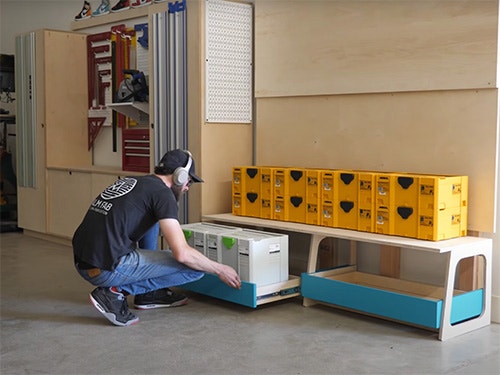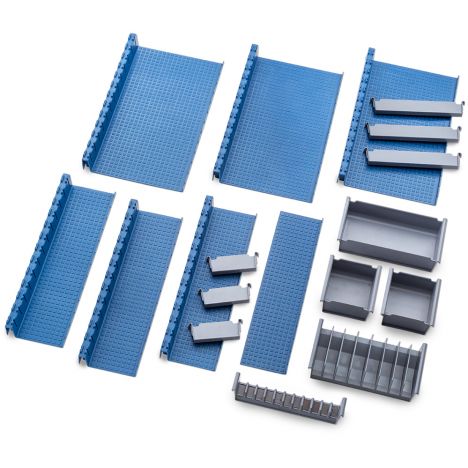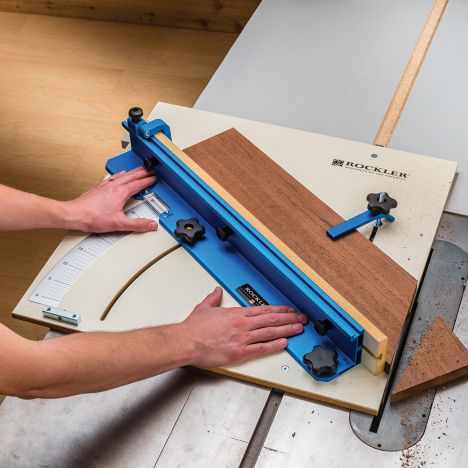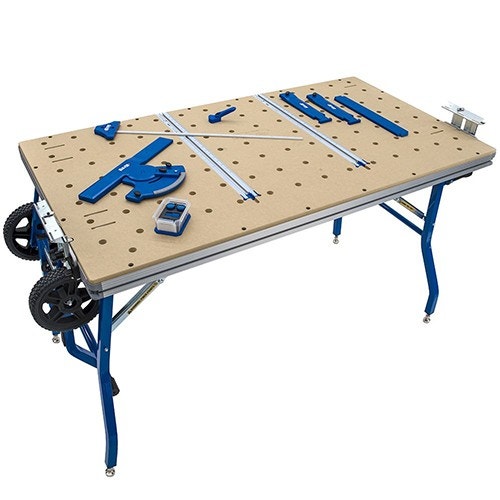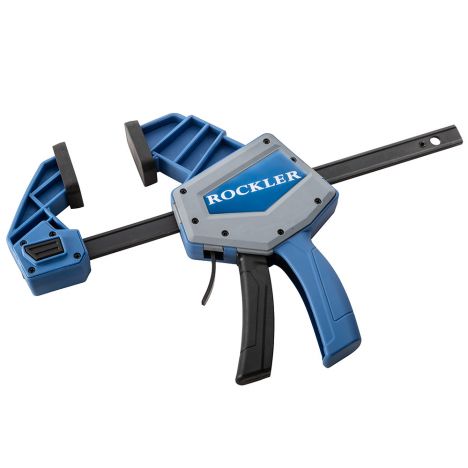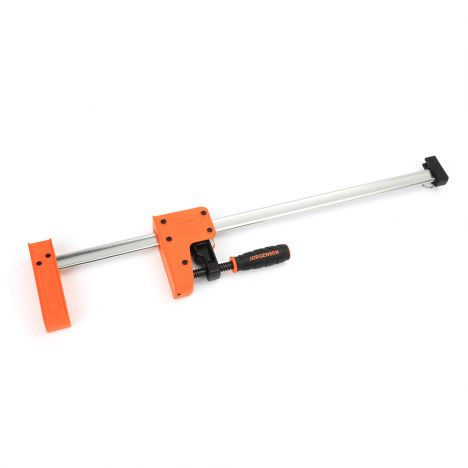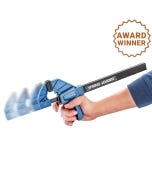Video: Workshop Organization
Chris Salomone goes over how to organize a workshop and workshop storage and covers how to organize large items, small items and build a storage system for systainers.
You can find more great projects and techniques from Chris Salomone at his website.
Featured Tools:
Chris Salomone: You're doing workshop storage wrong, or at least that was, let me explain. When you first start organizing the stuff in your shop, you're going to have this tendency to think about things as big things or small things, and the big things you'll think about individually. Where do I want my table saw? Where do I want my band saw and so on? The little things, you'll just clump them together as in where can I store all of my small things? You'll probably even build a few big things to store those small things. That's what led to this project and this project and this project.
Here's the good news, it's going to work to solve probably like 75% of your problem, but after a while, you're going to realize that things aren't as efficient as they could be. For lack of a better word, sometimes things are just a little bit annoying. Actually, let's go take a look at an example. This is one of the first things that I built when I moved into the new shop to start organizing. For the most part, it helped out a lot but like I was saying before, I'd say that 75% of it is efficient and good, and probably about 25% of it is annoying. This stuff I grab all the time, I'm literally talking dozens of time within every project.
The last thing I want to do is be opening up a door or a drawer every time I need to grab it, plus I look cool. Here are things start to break down a little bit. Things like finish, cans of paint, extra screws, all that stuff's great. It's out of sight, out of mind. I can grab it when I need it, I know where it's at. You'll notice that a lot of these shelves are partially empty, and that's because I've been moving things around the past few weeks and that illustrates the inefficiencies with it. Today I'm going to tackle the thing about this cabinet that's my biggest pet peeve. This low portion behind me where we keep a bunch of our tools that are in sustainers, and here's why it's annoying.
This thing holds some tools that we reach for a lot. We're talking multiple times during a project and usually, we'll use them for 20 minutes and then don't need them again for several hours or days. We have to drag out the sustainer, unpack the tool, pack it back up, put the sustainer away, only to do it again in a few hours, what ultimately happens is we just leave them laying around throughout the project and they get in the way of working, but we can solve this. Okay, so really there's six to eight sustainers that we need access to pretty frequently. Those are Sean's domino, my domino, the sustainer where we actually keep the little dominoes. Sean's track saw. My track saw our two sanders and an impact driver.
That said, we have six extra sanders that we need to keep somewhere, but we only need to access those whenever we have our workshop classes. I'm going to keep those here too. Then we have a few other sustainers that we really don't grab that often, so those can just stay in the other unit. My goal is I want to be able to walk over to where we keep the sustainers, open the lid, take the tool with me, and leave the box there. Then if I do need to take the box with me, I can. 90% of the time we don't. My first idea was something like this, a two-tiered shelf where the boxes that we don't need access to are on the bottom.
I realized that if I did this, I would need a huge gap between the top box of the first tier and the shelf for the second tier. Also, I want to create a clamp wall that sits above the unit, so the higher the boxes sit, the higher the clamps would have to potentially go. My next idea was to build the bottom tier as a shelf that can pull out. That way the whole thing's lower and I can still grab my tool, walk away and we're all good. Actually, one more thing. Obviously, functionality is going to be what's most important here, but I still want my shop furniture to reflect my personal style. I'm just going to keep that in mind as I'm building. All right, let's go.
Now, I will say, or I guess admit that I'm almost certainly being too precious about the way that I'm building this piece. It took me about three and a half days to build and film it, but if I just wanted to put something together more quickly and I wasn't filming it, it'd probably be the type of piece that you could knock out in an afternoon or at least a full day. I guess the point is it's worth the time investment if it makes you more productive and happy. Also, I realize that it feels like I'm quickly glossing over the actual building process of this piece.
If this is something that you think you'd like in your shop, follow me over on Instagram and I'll put up a post with some detailed drawings and dimensions that should give you all the info that you'd need to put one together.
The sustainer storage is coming out nicely, and we'll check back in on it in a minute. Before we do, real quick, let's just talk about shop storage in general. I break it down into three categories, and on one end of the spectrum you'd have what are essentially junk drawers, and then on the complete other end of the spectrum, you'd have, I guess, Uber-specific storage, junk drawer, Uber-specific out. Then in the middle where like 90% of your storage should be, we would have, I guess we'll call it hybrid storage. For the hybrid storage, again, there's going to be a whole spectrum, but I'm usually aiming for something like this.
You can see that nothing has a specific place carved out, but it's pretty easy to keep things organized. I know where things are and I can pretty quickly grab them. Here's a few more examples. Now, if you have particular drawers where you need to keep a lot of small things organized, there's actually some accessories that you can buy to help with that. Things like these Rockler Lock-Align Drawer Organizers have been really good for storing all of our CNC accessories, or even things like these small parts bins that you can get from the big-box store. Toss the lid, throw it in a drawer and you're good to go. All right, let's check back in on the sustainer storage.
All right, I got everything all set up and in its place and probably should have test-fit the boxes to make sure they fit. Before I came this far, I built some pretty tight tolerances so fingers crossed. Let's give it a shot. All right, it worked. Got like a quarter-inch to spare.
Keep the inspiration coming!
Subscribe to our newsletter for more woodworking tips and tricks
